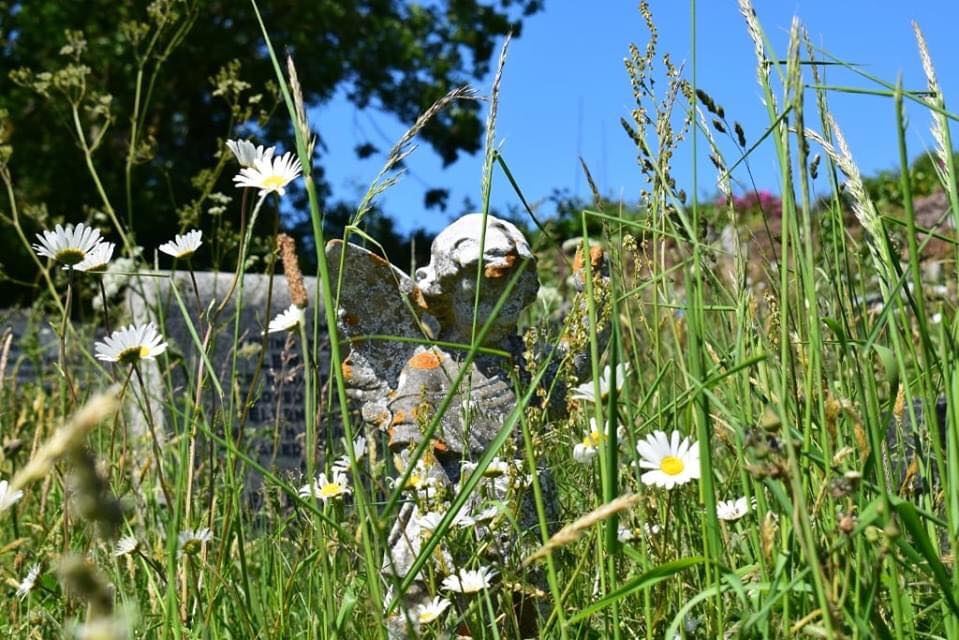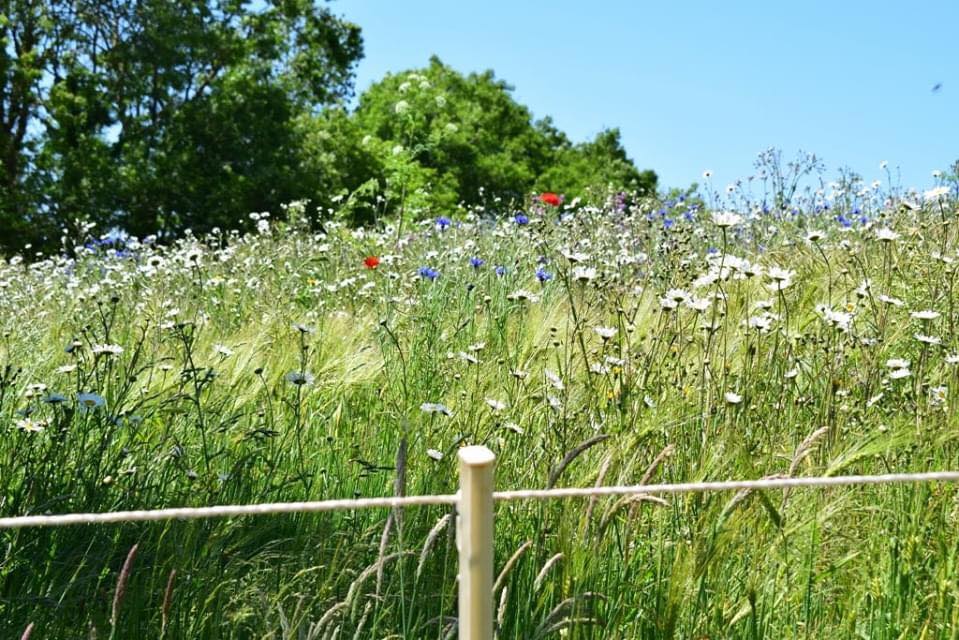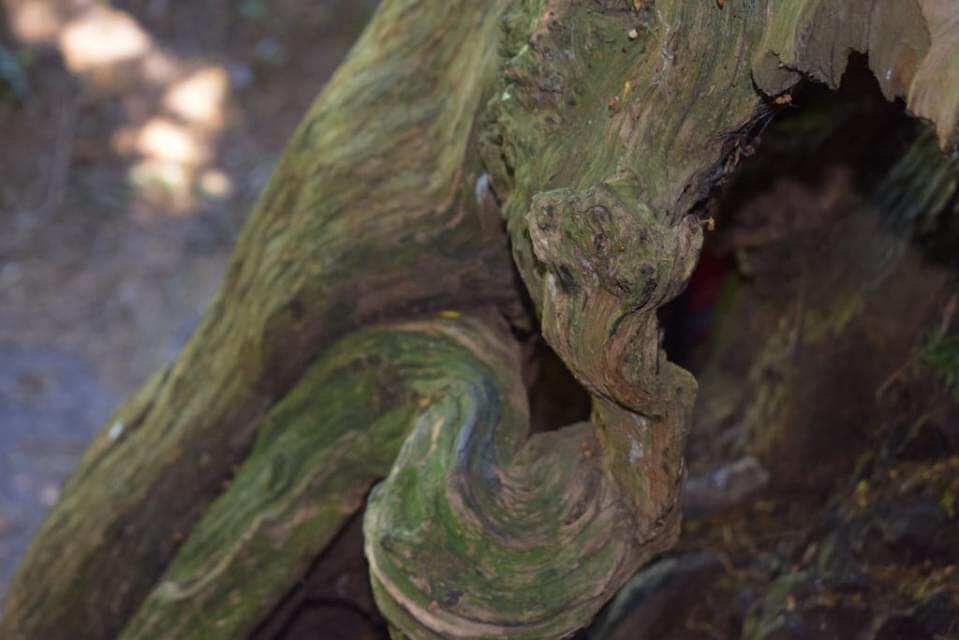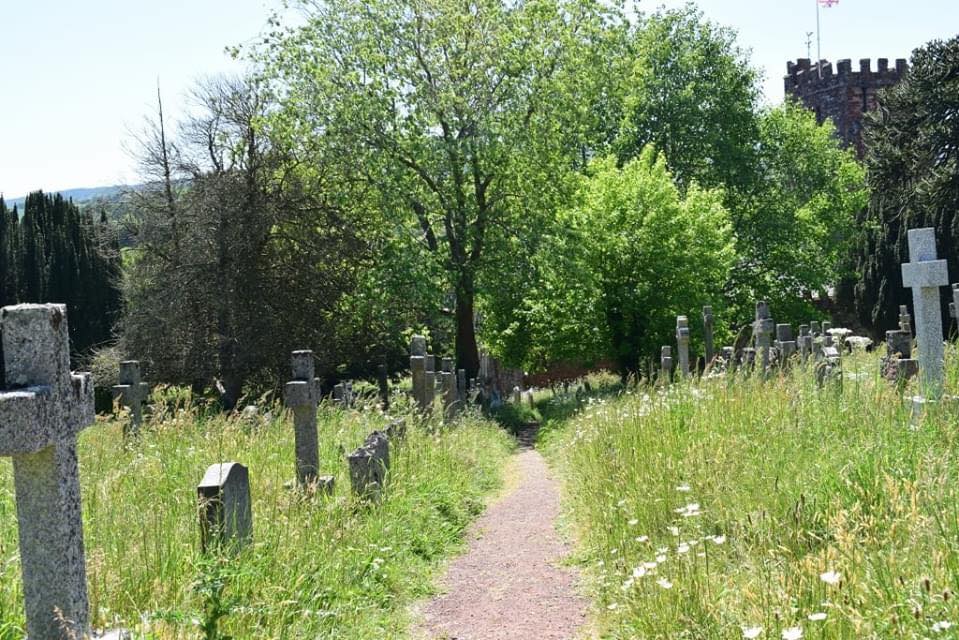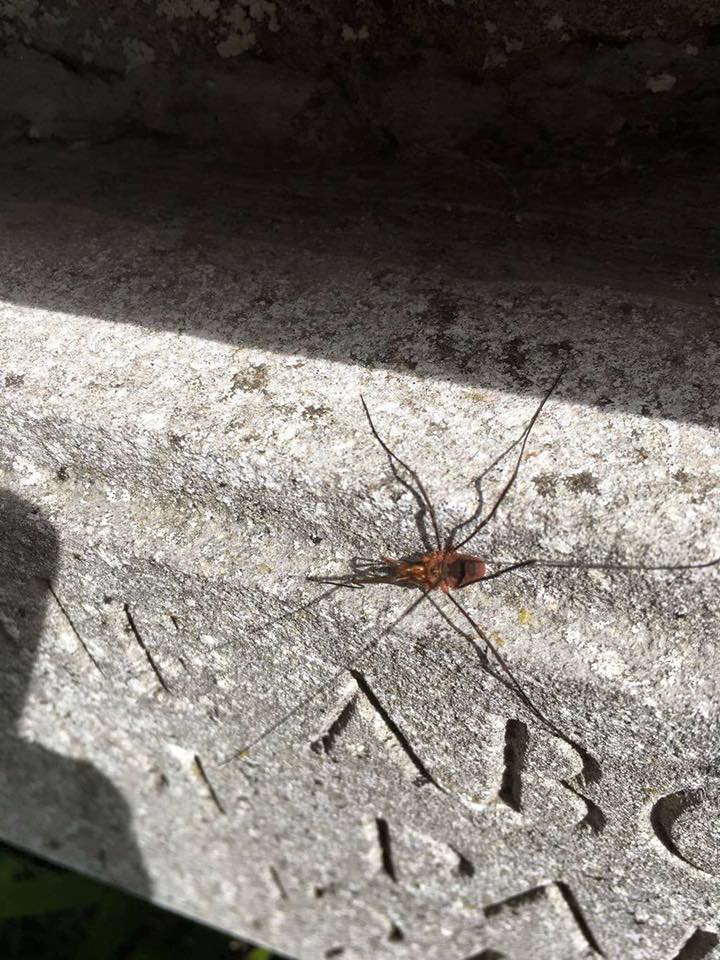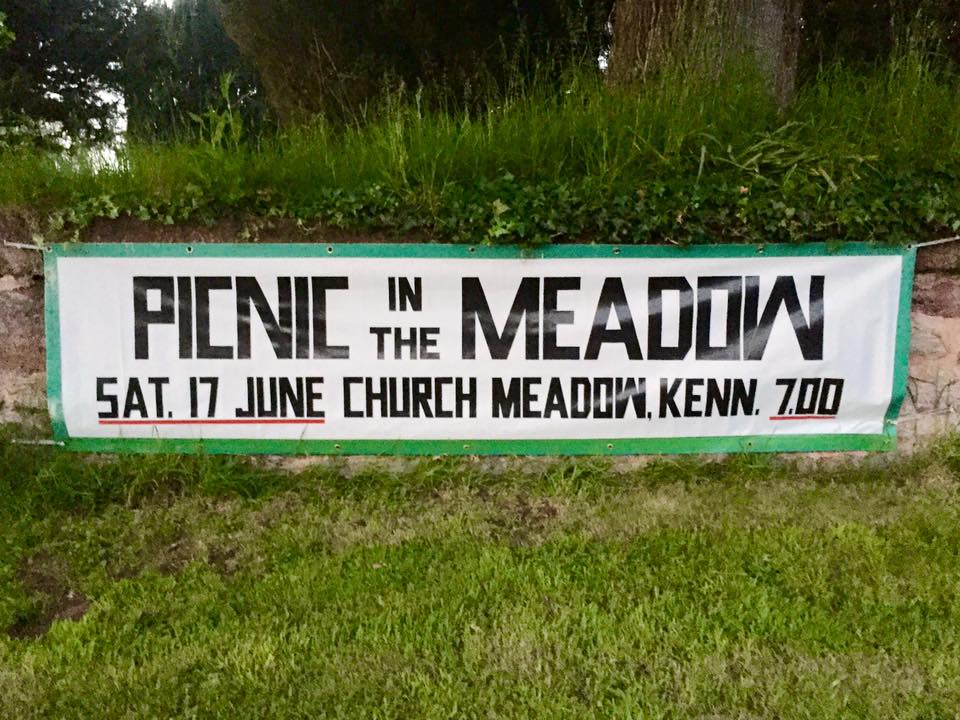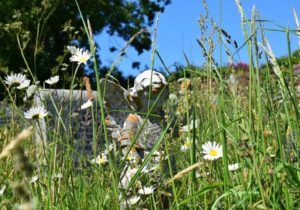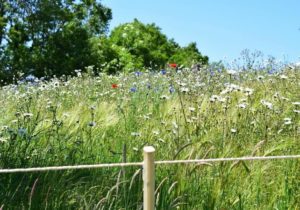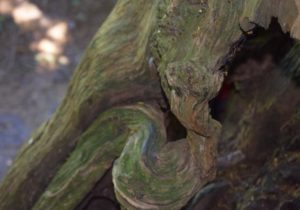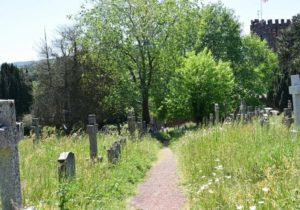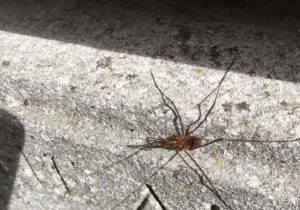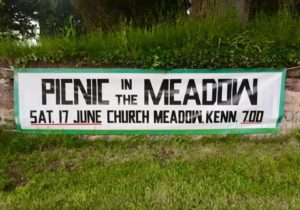About this churchyard
Essentially a 14th century structure, records of the existence of St Andrew’s Church at Kenn, a few miles south of Exeter, go back to the mid-12th Century, but it has likely been a site for worship since at least Saxon times. Indeed the imposing Yew Tree at the front of the church, is thought to be some 2000, if not as much as 4000 years old and may have been the focal point of an earlier pagan site. The walled churchyard of St Andrew’s has acted as an enclave for wild flora, as land around has been “improved” for agriculture over the centuries.
Today the churchyard is home to a wealth of natural flowers and other plants, and acts as an oasis surrounded by farmland which, while not as intensively worked as in other parts of the county and country, has impacted upon the adjacent countryside. A network of hedgerows link the churchyard with the ‘outside world’, acting as feeders in and routes out of the churchyard for wildlife, close by is the River Kenn, also a source of species.
Enclosed within the confines of the churchyard various habitats are represented exhibiting flora (some quite characteristic and uncommon) related to grassland and woodland, Hedges provide a shrubby layer, while standard trees, including the magnificent Yew provide food, cover and nesting and resting sites for a wide range of species of birds and other animals. There is a combination of sloping and flat grassland along with steeper slopes, conditions vary from dry to damp and light and shade, typical meadow plants are relics of former times. Boundary walls, and the church building provide additional ‘cliff-type’ habitat. Combined with the headstones these surfaces provide footholds for almost 100 lichen species, which vary depending upon their aspects and the character of the rock from which they are hewn. More lichens are found on trees, shrubs, benches and fences and include at least two very rare species, one new to the County.
The variety of niches and habitats is quite remarkable in such a small area and remains testament to the management regime which has ensured cutting at times to allow for flowering, feeding insects and seeding flowers. To date there are more than 110 species of wildflower recorded including, beautiful swathes of wild daffodil, snowdrop and primrose in spring, with carpets of wind-blown ox-eye daisy in summer. The diversity of plants encourages many species of insects, including meadowland butterflies. So far almost 130 species are known to reside in or visit the churchyard. Resident birds include two woodpecker species, nuthatch and tree creeper, great, blue, long-tailed and coal tits. Summer visitors include spotted flycatcher and the odd cirl bunting. Swallow, swift and house marten scoop insects arising from the undergrowth below, during the day to be replaced by a handful of bat species at night. Hedgehog, badger, fox and rabbit are other nocturnal visitors, along with two species of shrew, bank and field voles, house and wood mice, and moles. Particularly pleasing is the presence of viviparous lizard sunning themselves on the exposed walls; slow worms are resident and grass snake is also spotted from time to time. Other groups of plants and animals are being listed as time and expertise becomes available.
Management will continue to encourage wildlife as an attractive, contemplative backdrop to the primary purposes of the churchyard. Recently a ‘green group’ of interested and willing volunteers has been brought together to maintain the centuries-old natural legacy of St Andrew’s. The ‘Green Group’ is led by local naturalist and science writer, Kelvin Boot, who has visited numerous churchyards to assist David Curry, the Exeter Diocese Environmental Advisor who coordinates the Devon Living Churchyards scheme, and provide advice about ‘wilding’ churchyards.
Key Features
- Wildflower areas
- Peaceful space with benches for quiet reflection
- Wildlife haven
- Great for fungi
- Birders paradise
- Lichen haven
The Parish Church of Saint Andrew
Kenn, EX6 7UR
Visitor Information
Opening Times
St Andrew’s churchyard is always open and welcomes visitors, the church building is usually open during daylight hours throughout the year.
Contact details
Please visit the church website
Information on Site
Existing static signage includes a nicely produced information poster at the southeast gateway, and a panel explaining the importance of the large Yew tree.
Additional signage appears from time to time to relay relevant information. Further signage at relevant locations in the churchyard explain, for example, some aspects of wildlife interest to note.
Laminated sheets are available, for loan while visiting the churchyard, in the porch. Seasonal sheets are produced as different swathes of flowers appear, followed in autumn by berries etc. More sheets are in production and include birds, mammals, reptiles, butterflies, spiders and lichens.
Accessibility
There is a sloped, surfaced path that leads up to the lychgate and then a single step. There are surfaced paths around the front of the church and mown grass paths around the rest of the churchyard. This is a slightly sloping site with the steepest area being from the road to the lychgate.
Seating
There are three ‘park’ benches, donated by residents in memory of loved ones, for the enjoyment of visitors. Two are at the northern edge of the churchyard with views across to the church and beyond. The third bench, a recent addition, is to be found at the front of the church to the east of the main door and allows views over the fields and River Kenn.
Parking & Transport
There is roadside parking opposite the church and a car park just beyond the churchyard on the road junction.
The 366 bus stops by the pub in the village (The Ley Arms)
countrybusdevon.co.uk
Refreshments
The pub in the village is the Ley Arms https://theleyarmskenn.co.uk/new/ there are roadside eateries on the Devon Expressway a 6 minute drive from Kenn.


